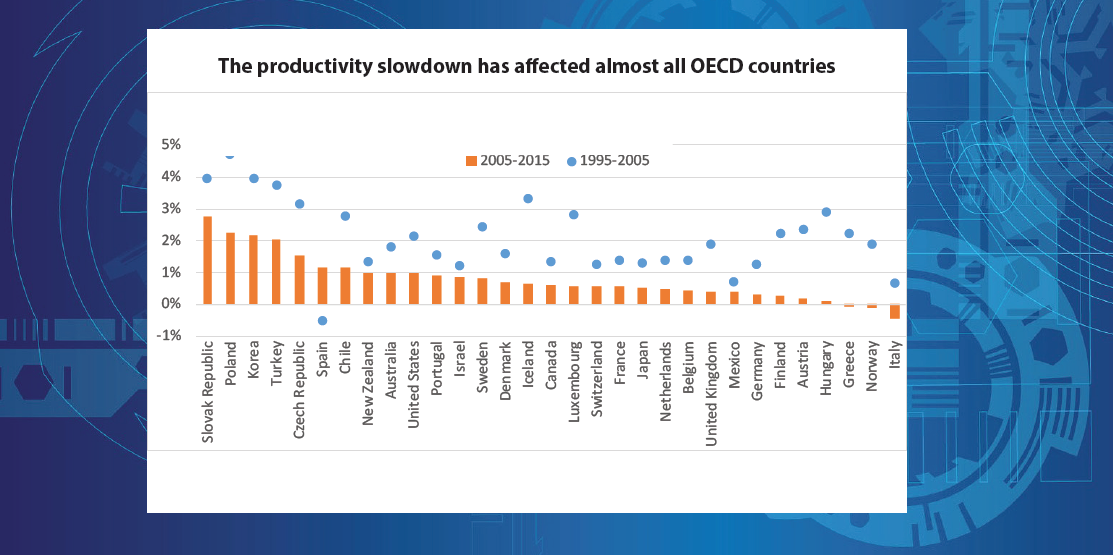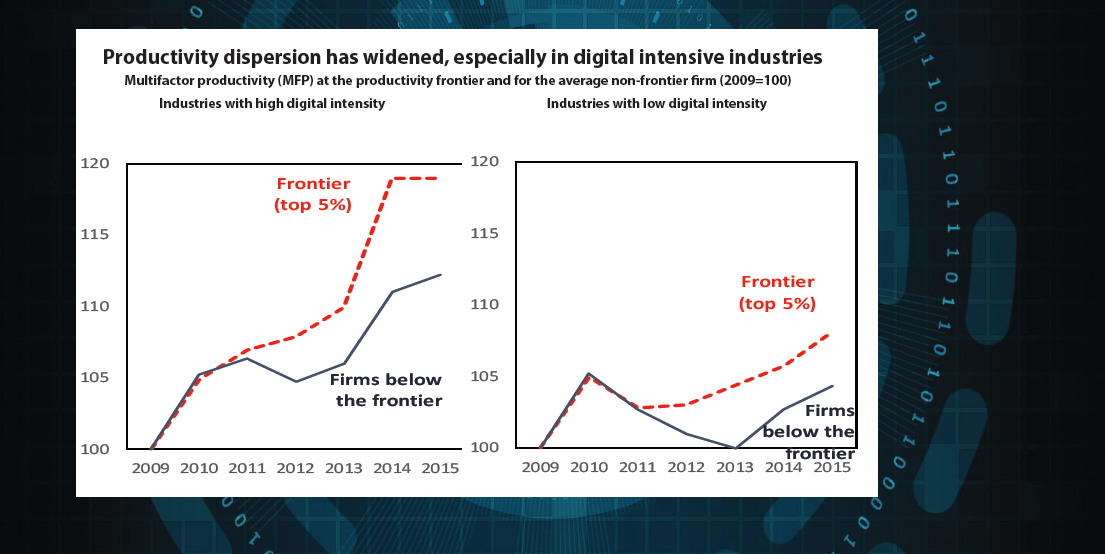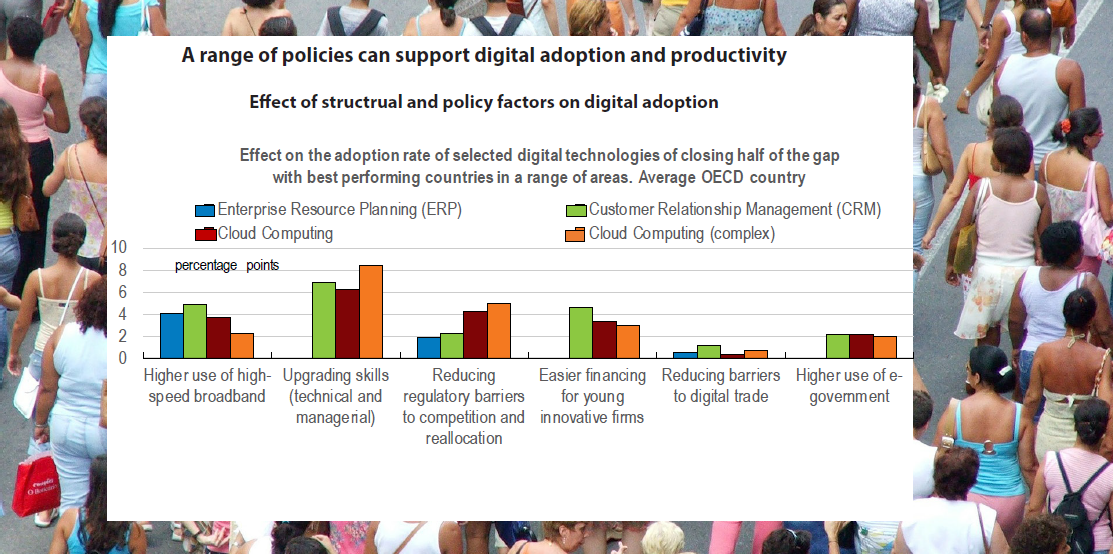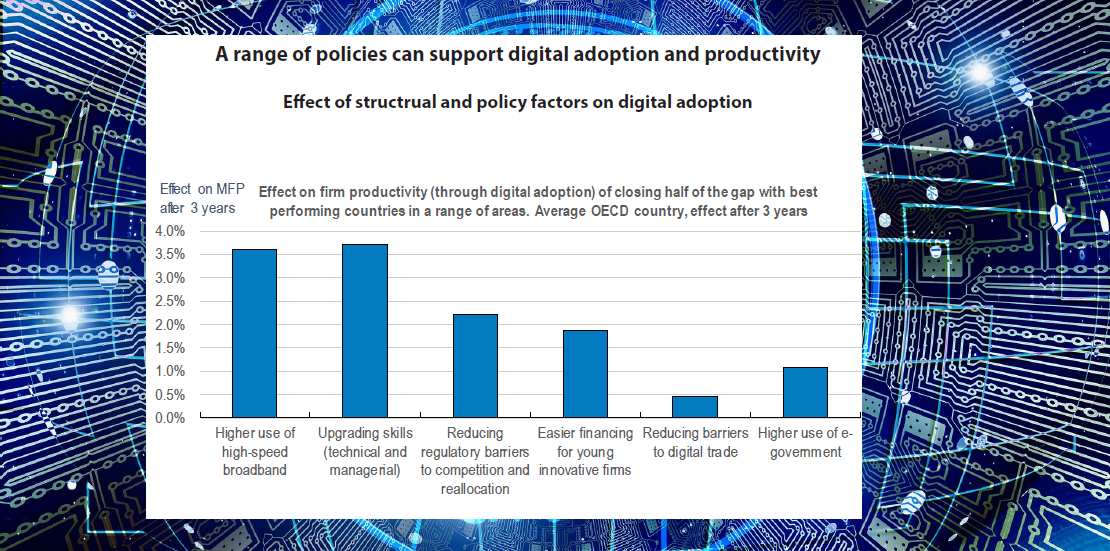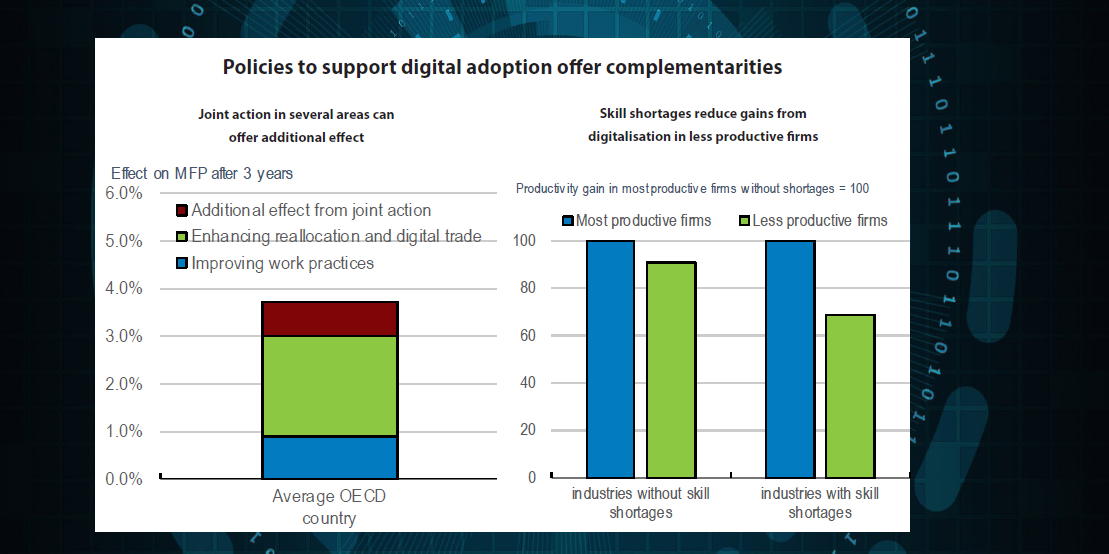Collapse Contents
Background Papers:
Digitalisation and productivity: In search of the holy grail – Firm-level empirical evidence from EU countries by Peter Gal, Giuseppe Nicoletti, Theodore Renault, Stéphane Sorbe and Christina Timiliotis
Digital technology diffusion: a matter of capabilities, incentives or both? by Dan Andrews, Giuseppe Nicoletti and Christina Timiliotis
